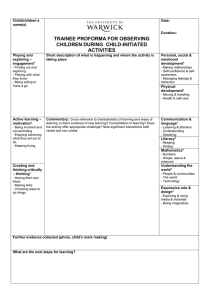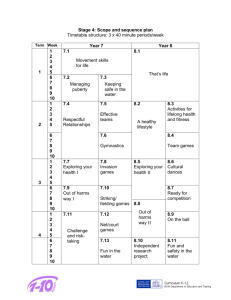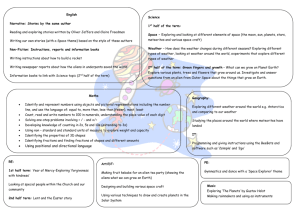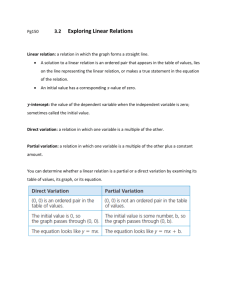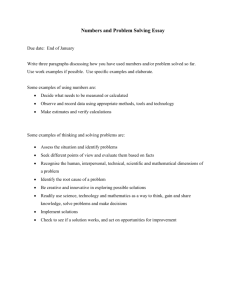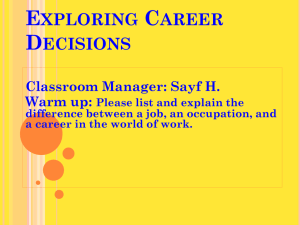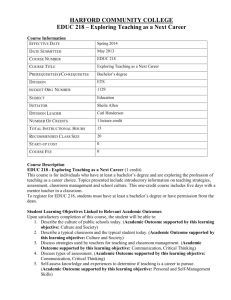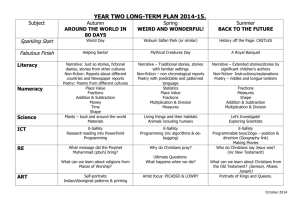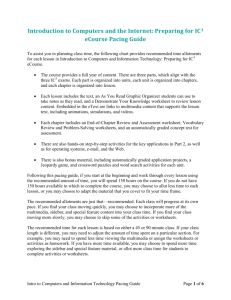3rd Grade
advertisement
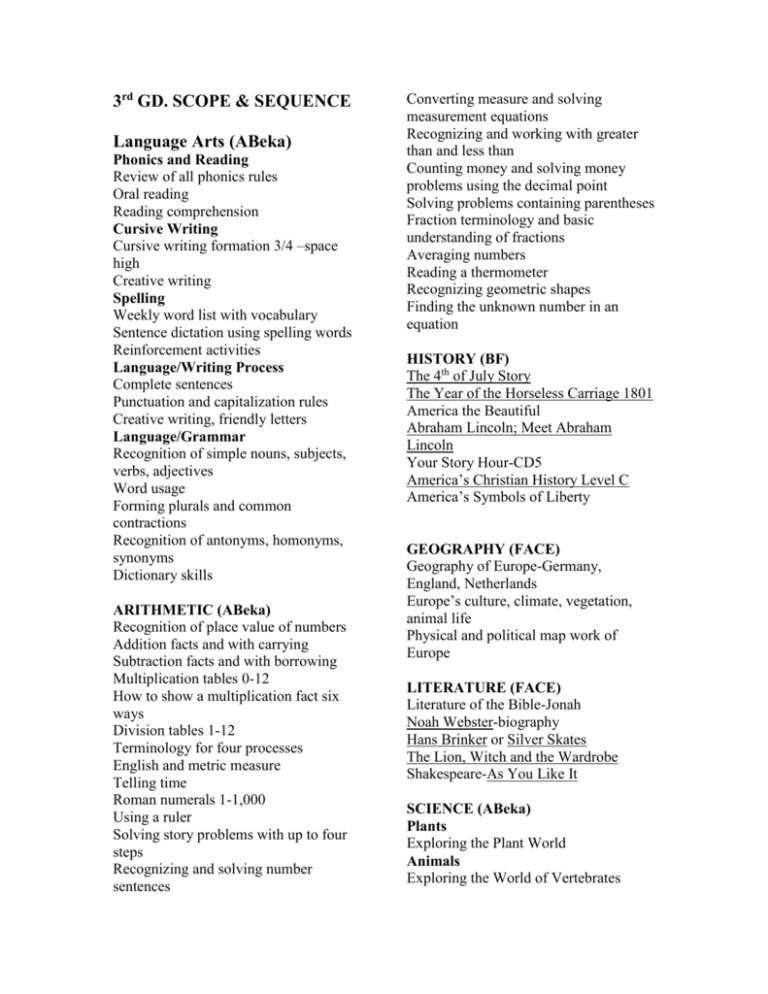
3rd GD. SCOPE & SEQUENCE Language Arts (ABeka) Phonics and Reading Review of all phonics rules Oral reading Reading comprehension Cursive Writing Cursive writing formation 3/4 –space high Creative writing Spelling Weekly word list with vocabulary Sentence dictation using spelling words Reinforcement activities Language/Writing Process Complete sentences Punctuation and capitalization rules Creative writing, friendly letters Language/Grammar Recognition of simple nouns, subjects, verbs, adjectives Word usage Forming plurals and common contractions Recognition of antonyms, homonyms, synonyms Dictionary skills ARITHMETIC (ABeka) Recognition of place value of numbers Addition facts and with carrying Subtraction facts and with borrowing Multiplication tables 0-12 How to show a multiplication fact six ways Division tables 1-12 Terminology for four processes English and metric measure Telling time Roman numerals 1-1,000 Using a ruler Solving story problems with up to four steps Recognizing and solving number sentences Converting measure and solving measurement equations Recognizing and working with greater than and less than Counting money and solving money problems using the decimal point Solving problems containing parentheses Fraction terminology and basic understanding of fractions Averaging numbers Reading a thermometer Recognizing geometric shapes Finding the unknown number in an equation HISTORY (BF) The 4th of July Story The Year of the Horseless Carriage 1801 America the Beautiful Abraham Lincoln; Meet Abraham Lincoln Your Story Hour-CD5 America’s Christian History Level C America’s Symbols of Liberty GEOGRAPHY (FACE) Geography of Europe-Germany, England, Netherlands Europe’s culture, climate, vegetation, animal life Physical and political map work of Europe LITERATURE (FACE) Literature of the Bible-Jonah Noah Webster-biography Hans Brinker or Silver Skates The Lion, Witch and the Wardrobe Shakespeare-As You Like It SCIENCE (ABeka) Plants Exploring the Plant World Animals Exploring the World of Vertebrates Exploring the World of Invertebrates Health and Human Biology Wonderfully Made Earth and Space Exploring the Ocean Exploring the Weather Conservation Exploring the Desert, the Ocean, the Pond, the Forest, the Farmer’s Field ART (FACE) Elements of design through the study of Creation Basics of drawing Basics of color and value in painting Basics of color and value in pastels Clay projects Printing Mixed media Art from The Middle Ages Select Artist (history, style) Christian Perspective on art and individuality BIBLE (The Young Peacemaker, Biblical Choices) Biblical Conflict Resolution, The God of Choices: Values of Faithfulness, faith in God, loyalty, forgiveness, thankfulness, courage Important People Make Important Choices; Exodus-Ruth Kingly Choices in the New Land; 1 Samuel 4-10, 11-31; 2 Samuel 11-18; Psalms 18, 21, 23, 27, 44 The Choice of Jesus; Matthew 26-28; John 18-19; Revelation 3 The Young Church Tells the Good News; Acts 1-10, 22 MUSIC (FACE) Singing: building a repertoire of a variety of songs; singing unison, twotone added parts, and rounds; using proper posture and enunciation; higher or lower pitch Moving: moving to advanced singing and rhythm games; Creating: creating short melodies; creating rhythmic accompaniments; adding verses to songs Understanding and Playing Instruments: playing rhythm, accompaniment, and/or melody instruments; reading notation of rhythmic patterns; learning about instruments of the orchestra Appreciation: learning about great composers; developing listening skills; learning about music from historical periods Music Writing and Theory: extending knowledge of notation; identifying note names of treble clef; beginning understanding of dynamic markings; drawing a grand staff P. E. (FACE) Internal Objectives: develop listening skills; develop respect for teachers and fellow students; learn good sportsmanship; develop confidence; develop a good attitude; learn to follow directions; develop self-control; develop cooperation with others External Objectives: develop skill and coordination; gain a general knowledge of rules of games and sports such as cooperation games, kickball, soccer, tumbling & gymnastics, jump for heart (jump roping), volleyball, and t-ball; develop an interest in playing these sports later in life; learn to exercise; develop endurance; develop physical strength; strengthen weaknesses; participate in the President’s Fitness Program; develop good health habits; learn to play with others safely; show an overall improvement; begin a new group of exercises each quarter; practice sports during the appropriate season; discuss proper nutrition, good dental health, good personal hygiene; play games and work on skills with the ball
